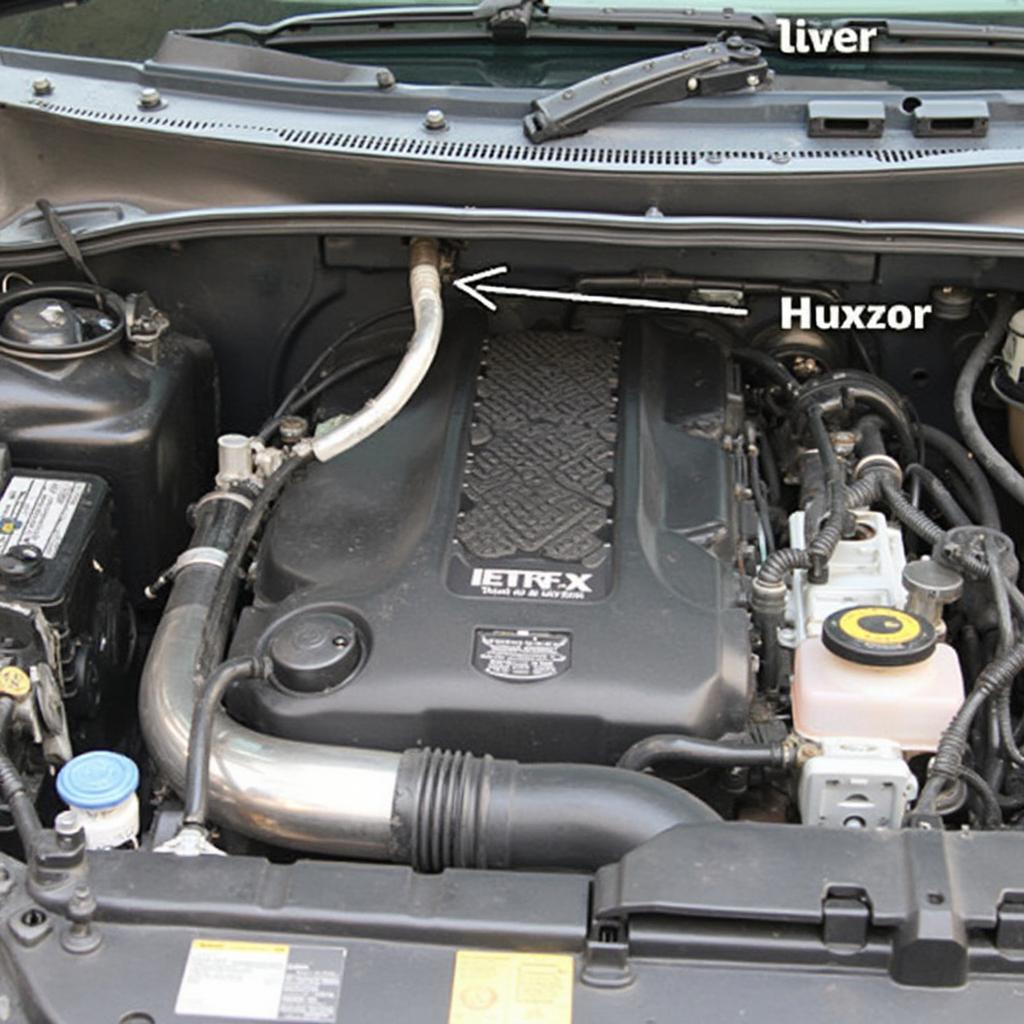The OBD2 code P22A7 indicates a problem with the NOx (nitrogen oxides) sensor circuit, specifically bank 1 sensor 1. This code can be a headache for car owners, so let’s dive into understanding what it means, its symptoms, causes, and how to fix it.
What Does the P22A7 Code Mean?
The P22A7 code signifies that the powertrain control module (PCM) has detected a voltage signal from the NOx sensor that is outside the normal operating range. “Bank 1” refers to the side of the engine containing cylinder 1, and “Sensor 1” designates the upstream NOx sensor, located before the catalytic converter. This sensor plays a crucial role in monitoring the level of nitrogen oxides in the exhaust gases, ensuring your vehicle meets emission standards.
Symptoms of a P22A7 Code
While the check engine light illuminating is the most obvious symptom, other indicators of a P22A7 code might include:
- Decreased fuel economy
- Reduced engine performance
- Rough idling
- Failed emissions test
Common Causes of the P22A7 Code
Several factors can trigger the P22A7 code. Some of the most frequent culprits include:
- Faulty NOx sensor
- Damaged wiring or connectors in the NOx sensor circuit
- Exhaust leaks before the sensor
- Issues with the PCM (rare)
- Faulty catalytic converter
How to Diagnose and Fix the P22A7 Code
Diagnosing and fixing a P22A7 code requires a systematic approach. Here’s a step-by-step guide:
-
Inspect the wiring and connectors: Look for any visible damage, corrosion, or loose connections in the NOx sensor wiring harness. Repair or replace any damaged components.
-
Check for exhaust leaks: Inspect the exhaust system for leaks, especially before the NOx sensor. Leaks can introduce fresh air into the exhaust stream, affecting the sensor readings.
-
Test the NOx sensor: Use an OBD2 scanner to monitor the NOx sensor voltage readings. Compare the readings to the manufacturer’s specifications. If the readings are out of range, replace the NOx sensor.
-
Check the catalytic converter: If the catalytic converter is failing, it can cause the NOx sensor readings to be inaccurate. A professional mechanic should diagnose and replace a faulty catalytic converter.
-
Inspect the PCM: In rare cases, a faulty PCM can trigger the P22A7 code. However, this should be considered only after all other potential causes have been ruled out. A professional diagnosis is recommended for PCM issues.
Conclusion
The OBD2 code P22A7, relating to the NOx sensor circuit, can impact your vehicle’s performance and emissions. Understanding the code, its symptoms, and potential causes can help you diagnose and fix the problem effectively. While some fixes can be DIY projects, more complex issues might require professional assistance. Addressing the P22A7 code promptly will ensure your vehicle runs smoothly and meets emission regulations.
FAQ
-
What does NOx stand for? NOx stands for nitrogen oxides, a group of gases that contribute to air pollution.
-
Can I drive with a P22A7 code? While you might be able to drive short distances, it’s recommended to address the issue promptly to prevent further damage and ensure your vehicle meets emission standards.
-
How much does a NOx sensor replacement cost? The cost can vary depending on the vehicle and the specific sensor, typically ranging from $200 to $500.
-
How can I prevent P22A7 from recurring? Regular vehicle maintenance, including checking for exhaust leaks and ensuring proper wiring connections, can help prevent future occurrences.
-
Is the P22A7 code serious? While not immediately dangerous, ignoring the P22A7 code can lead to more significant problems with the catalytic converter or other engine components.
-
Can I clear the P22A7 code myself? You can clear the code with an OBD2 scanner, but the code will return if the underlying issue isn’t addressed.
-
Do all cars have NOx sensors? NOx sensors are typically found in diesel vehicles and newer gasoline vehicles equipped with advanced emission control systems.
Need more help? Check out our other articles on OBD2 codes and car diagnostics. Also, see our guide on choosing the right OBD2 scanner for your needs.
For further assistance, contact us via WhatsApp: +1(641)206-8880, Email: [email protected] or visit our office at 789 Elm Street, San Francisco, CA 94102, USA. We have a 24/7 customer support team ready to help.


